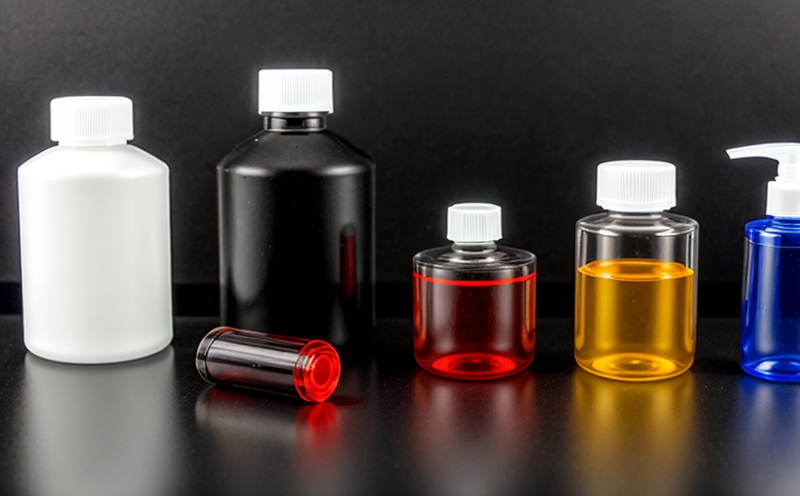ISO 15105 Gas Permeability Testing of Barrier Polymer Nanocomposites
The ISO 15105 standard defines a procedure for determining the gas permeability rate through barrier materials, including nanocomposites in plastics and polymers. This service is critical for ensuring that materials used in applications requiring high-barrier properties meet stringent performance criteria. Gas permeation can affect product shelf life, packaging integrity, and overall quality. Understanding this parameter allows manufacturers to optimize formulations and ensure compliance with international standards.
Barrier polymer nanocomposites are increasingly important due to their ability to enhance the gas barrier properties of plastics. Nanoparticles such as clay, carbon nanotubes, or graphene can be incorporated into polymeric matrices to form a more effective barrier against gases like oxygen, nitrogen, and moisture vapor. The challenge lies in accurately measuring how these nano-additives influence the overall gas permeability of the final material.
Compliance with ISO 15105 ensures that the test results are reproducible and comparable across different laboratories worldwide. This standard specifies a dynamic method where the material is exposed to controlled pressure differences, allowing for accurate measurement under realistic conditions. The testing setup involves precise control over temperature, humidity, and gas flow rates. Specimens are typically prepared as thin films or laminates, which are then clamped into the test chamber.
Understanding the impact of nano-additives on barrier properties requires careful sample preparation to ensure uniform dispersion within the polymer matrix. The process starts with selecting appropriate nanoparticles based on their size and shape, followed by thorough mixing using techniques like sonication or high-shear homogenization. Afterward, films are cast onto substrates or prepared as laminates for testing.
The test apparatus used in this procedure is designed to measure the rate of gas transfer through a thin film under defined conditions. The setup includes a pressure regulator and sensor, flow meters, temperature control systems, and data acquisition software. During the test, one side of the specimen is exposed to a high-pressure gas atmosphere, while the other side is maintained at atmospheric pressure.
Accurate measurement of gas permeability is achieved by monitoring changes in pressure across the sample over time. The rate of change provides direct information about the barrier properties of the material. Post-test analysis involves evaluating both quantitative data (e.g., permeability coefficient) and qualitative observations related to film integrity.
The results from ISO 15105 gas permeability testing are essential for several reasons:
- Ensuring product shelf-life by verifying that nanocomposites provide adequate protection against oxygen and moisture vapor.
- Supporting regulatory compliance with international standards governing packaging materials.
- Aiding in process optimization during development phases to fine-tune nano-additive concentrations.
This service not only helps companies meet regulatory requirements but also enhances product performance, reducing waste and improving overall quality. By leveraging state-of-the-art facilities and experienced personnel, we deliver reliable test results that contribute significantly to your organization's success in the global market.
Why It Matters
The importance of gas permeability testing cannot be overstated, especially when dealing with nanocomposites used in critical applications. Accurate measurement ensures that these materials perform as expected regarding their intended function. For instance, packaging designed to keep food fresh for extended periods must maintain optimal oxygen and moisture levels inside the package without allowing excessive ingress from outside.
Failure to meet gas permeability standards can lead to product spoilage, which has significant economic implications. In industries such as pharmaceuticals or electronics manufacturing, where maintaining product integrity is paramount, even small breaches in barrier protection could result in costly recalls and reputational damage.
In addition to preventing spoilage, effective gas barriers play a crucial role in extending the shelf life of many consumer goods. For example, packaging materials used for storing fresh produce need to allow sufficient respiration while minimizing water vapor loss. Similarly, medical devices require controlled exposure to gases during storage and transportation.
From an R&D perspective, understanding how different nano-additives influence gas barrier properties allows developers to innovate more efficient formulations. By iteratively testing various combinations of nanoparticles and polymer matrices, researchers can identify optimal blends that balance cost-effectiveness with performance requirements.
Customer Impact and Satisfaction
- Enhanced Product Quality: Reliable gas permeability testing helps ensure that products meet strict quality standards, thereby enhancing customer satisfaction.
- Cost Efficiency: Accurate measurement reduces the likelihood of costly errors during production processes.
- Regulatory Compliance: Meeting international standards demonstrates commitment to ethical business practices and fosters trust among stakeholders.
Our clients benefit from our comprehensive approach, which includes detailed reporting tailored to their specific needs. This not only aids in internal decision-making but also supports external communication with regulatory bodies or partners involved in joint ventures.
We understand that each client has unique requirements, whether it's rapid turnaround times for urgent projects or extensive customization of reports. Our team works closely with you to understand your goals and deliver solutions that align perfectly with them.
Use Cases and Application Examples
The application of ISO 15105 gas permeability testing extends beyond just packaging materials into various sectors:
- Pharmaceutical Packaging: Ensuring that medications remain stable throughout their shelf life.
- Food & Beverage Industry: Maintaining freshness and flavor of perishable items like fruits, vegetables, or dairy products.
- Electronic Device Manufacturing: Protecting sensitive components from moisture and other environmental factors during assembly and storage.
In addition to these broad applications, the testing methodology can also be adapted for specific scenarios. For example:
- Bioactive Packaging: Designing packaging that releases beneficial compounds into contained environments like wound dressings or food containers.
- Solar Cell Protection: Developing encapsulation layers to safeguard photovoltaic cells from atmospheric elements.
These examples illustrate the versatility of ISO 15105 testing and its relevance across multiple industries. By providing accurate, reliable data, we enable our clients to make informed decisions that drive innovation and improvement in their respective fields.





